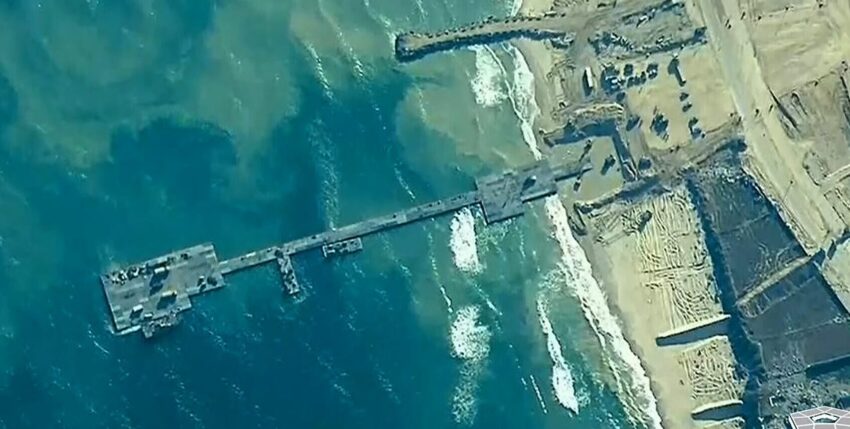At the beginning of March, immediately after President Joe Biden's State of the Union address, the US Department of Defence declared an emergency mission to set up a temporary pier facility on the coast of Gaza to deliver 2 million meals a day as humanitarian aid to the Palestinian population. Under the direction of U.S. Central Command, the Joint Logistics Over-the-Shore Capability (JLOTS) was to be brought to bear within 60 days. This includes a floating pontoon anchored off the coast and a two-lane floating pier that provides the connection to the mainland. On the seaward side, a squadron of support vessels and barges (lighterage system craft) manage the shuttle traffic from the supplier arriving from Cyprus at the pontoon to the floating pier, where the transfer to wheeled vehicles takes place.
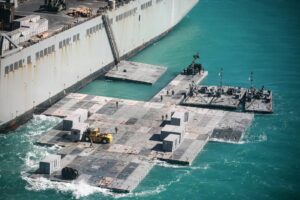
Preparations
The challenge here was not to have any "US boots on the ground", neither at the start of setting up the pier nor afterwards when landing the food, so as not to become an immediate party to the war as long as there was active fighting in the zone.
Both the pontoon and the 550 metre (1,800 foot) long floating pier are assembled modularly at sea and then anchored there or pushed ashore from the sea onto the prepared beach. Even if some parts of this JLOTS capability are deployed and pre-stationed worldwide, it is impossible to set up such a facility ad hoc. The majority of the components are stored at Joint Base Langley-Eustis in Virginia on the east coast of the United States and must first be transported to the eastern Mediterranean. These parts were last used in Australia for the Exercise Talisman Sabre 2023. Hence the unavoidably long lead time of 60 days.
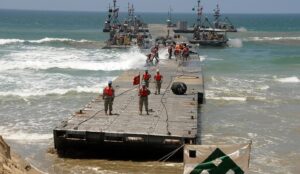
In addition, 1,000 soldiers were needed to set up this emergency pier and the shuttle service. Transporting the food from the dam into the country will be the task of civilian partner companies and NGOs. Initially, 90 lorry loads will be landed daily, rising to 150 at full capacity.
Milestones
At the beginning of May, half of the facility had already been completed alongside the floating pontoon when work had to be temporarily suspended due to poor weather conditions. At least the 82 metre long and 22 metre wide (270 x 72 feet) pontoon could be anchored in time as a transshipment base around three nautical miles off the coast - it will be used in a roll-off roll-on process.
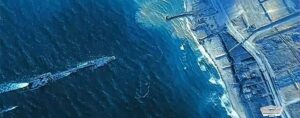
Now, according to US CENTCOM, the first aid shipments rolled over the temporary pier on the coast of the Gaza Strip at around 08:00 CEST on 17 May 2024, probably around 3 kilometres north of the border with Egypt according to aerial photographs. This floating delivery pier, previously pre-assembled in Ashdod, Israel (15 kilometres north of the Gaza-Israel border), was pushed onto the extensively prepared beach on 16 May and anchored there. The press release from US CENTCOM emphasises that no US troops entered the Gaza Strip for these operations - thanks to the Israeli armed forces, who are responsible here and are also securing the entire operation with their forces. This is because the aid supplies are also subject to mandatory Israeli controls on arrival in Cyprus and on landing. Ultimately, however, they are received and distributed by the United Nations.
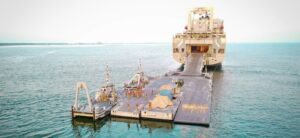
Closing words for the beginning
"We have been working closely with the Israeli Defence Forces for the past six weeks to ensure that every aspect of logistics operations, command and control, communications and force protection is in place," CENTCOM Deputy Commander Vice Admiral Brad Cooper told media representatives on 16 May.

